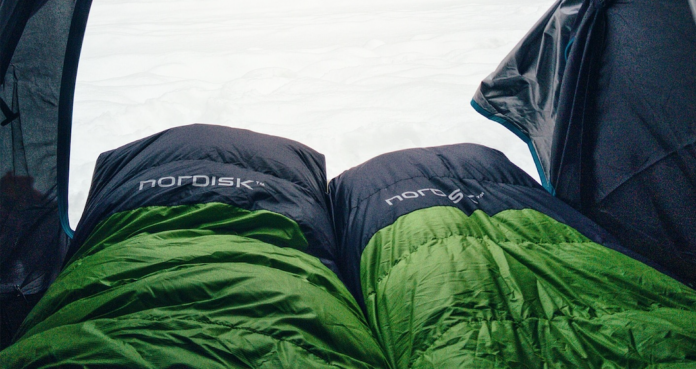Last Friday I woke up to the sound of slush blobs landing on my tent. I don’t think I’ve ever dreaded packing up a campsite more. Warm and snuggled into my sleeping bag, I didn’t have much motivation to move.
My new zero-degree sleeping bag has been wonderful. I am never cold on winter camping trips. However, I recently discovered it’s much more difficult to wash because of its thick insulating fluff.
I try not to wash my sleeping bags unless they absolutely need to be washed. Wet, muddy conditions typically warrant a wash.
After unpacking and hanging most of our gear to dry, I attempted to wash the larger of the two sleeping bags at home. I loaded it into the washer by itself and ran it through a heavy wash cycle. The washer overflowed and the sleeping bag sustained a small tear. Next time, I am going to have to make a trip to the laundry mat.
The sleeping bag came out clean and air-dried just fine, but I had to figure out how to fix a 1-inch tear in polyester taffeta fabric.
Patching a torn sleeping bag
There are a couple of products made to patch a range of outdoor equipment made of a variety of materials.
Gear Aid’s Tenacious Tape is a tough, weatherproof material with an “ultra-aggressive” adhesive backing that can instantly repair holes and tears in nearly any material and leave it machine washable after 24 hours. It comes in a variety of colors to match your gear and a clear option. It can be used to quickly fix tents, ski pants, puffy coats, sleeping bags, hammocks, backpacks, awnings, tarps and more. According to Gear Aid, its Tenacious Tape permanently bonds to outdoor fabrics and materials including nylon, vinyl, rubber and plastic. It’s also a relatively inexpensive option, selling for $5.95 a roll on Amazon.
Tear-Aid is a more expensive option. Tear-Aid Type A patches stick to canvas, rubber, neoprene, nylon, plastics, polyethylene, polypropylene, polyurethane, non-oil leather, sumbrella, Gore-tex, acrylics, fiberglass, aluminum, polyester, hypalon, dacron and most fabrics. Type B patches are made for vinyl and vinyl-coated materials only. Tear-Aid patch kits cost around $12, depending on the retailer.
After diving into customer reviews on Amazon, I settled on Gear Aid’s Tenacious Tape to patch the small tear in my sleeping bag.
Patching a tear in your sleeping bag while it’s small will ensure the tear won’t spread and can extend the life of your sleeping bag for years to come. Follow the steps below to effectively seal a tear or hole in your sleeping bag.
Steps
- Make sure your sleeping bag is clean and dry.
- Cut a patch that is at least ½ inch larger than the hole or tear on all sides.
- Peel the backing off the patch and apply it to the tear or hole.
- Smooth out the patch’s edges from the center outward to eliminate air bubbles.
- Use Gear Aid Seam Grip to coat and seal the edges of the patch.
- Allow the patch to cure flat before storing.












